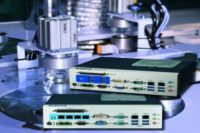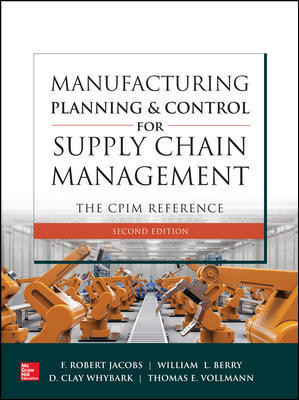At its simplest, automation means to make something automatic. In manufacturing, whether describing a single device or an entire system or process, automation refers to performing one or many tasks autonomously with minimal or even no human interaction in a manufacturing or production environment.
“In most situations, automation allows manufacturers to produce goods faster, with higher quality, and at a lower cost than manual operations,” said David Dechow, principal vision systems architect for Integro Technologies. “Robots are just one component or ‘tool’ in the automation landscape. When correctly specified and implemented for a suitable task, robots enable automation in an important way by helping to make the automation system more flexible and reliable. Unlike ‘fixed’ automation that often must be designed to work in a very specific way, a robot can be programmed to work with a wide variety of parts and perform different tasks on command. When enabled with technologies like machine vision, robots can be even more autonomous, and may have the capability (for example) to locate objects that are randomly oriented, or if mobile, navigate motion through a factory environment without intervention.”
According to Dechow, the fundamentals of automation and robotics include:
Understand (in a broad sense) the automation/robotic technologies and their capabilities. End users of high-tech automation equipment sometimes decide to use a specific technology or component before they fully understand what that component does, how it does it and whether or not it actually is appropriate for the target application. Best practice is to analyze the needs of the application then match technology to the task.
Robots are programmable, flexible automation components. Enabling technologies (like machine vision) can help make them more flexible. Nonetheless, as with any automation component there are physical and technical limitations. Pushing the boundaries of technology can sometimes yield great reward yet at great risk. One must understand the technology limitations in order to determine that risk/reward ratio for a given application. (This applies to most automation components not just robots.)
Configuring robots or other automation components has become a standard engineering task. It’s not too difficult; end users and integrators should invest in the training required to bring their engineering staff up to speed with key technologies that are beneficial to the process.
And how important is it to be familiar with these fundamentals? As Dechow puts it, “When PLCs (programmable logic controllers) arrived on the industrial scene, broad adoption took a while and a small but important part of that was the lack of engineers/PLC programmers available. Demand is still high for engineers with that skill.
Dechow continued, “Robotics is the next skill set that is and will continue to be in very high demand as an engineering discipline. From the engineer’s point of view, learning the basics of robotics and automation will be a personal achievement and a career enhancement.”
Investing in Automation and Robotics
There are a number of things manufacturers and operational investors should keep in mind when contemplating adding robotic automation to the mix, including a cost-benefit analysis and how robotic automation will affect their existing operation. A typical cost benefit analysis for a robotic automation system should evaluate, relative to system cost, potential:
- Increases in overall productivity
- Increases in quality and yields or reduction of scrap
- Reduction of time in changeover
- Impact on the added flexibility of the system
And for anyone concerned about the potential disruptions to the workforce, including “the human factor,” Dechow is quick to point out that, “Automation does not replace humans. This is so strongly supported by facts and statistics gathered over dozens if not hundreds of years that it could not possibly be disputed. Real metrics are readily available that show that as automation technology grows in industry so do jobs. This is most prominent in the period of time since robots have been used in automation. Real numbers show that companies that automate with robotics grow and add jobs.”
And for existing workers, the argument is that the disruptions that occur are in the form of additional training and an increase in job skills, which eventually benefits the worker, and the operation, more than it hurts them.
“Personally, I have never had a company say they will get rid of workers as a result of adding automation or robotics to their process,” said Dechow. “While the cost of the worker in a specific job function might be considered in the ROI of adding automation, the workers are retained and retrained. Industry already cannot get enough workers to do manual processes and support machinery; automation will continue to fill a gap but does not result in joblessness.”
Speaking of gaps, automation and robotics has, and will continue to have, a great deal to do with the skills, or workforce, gap.
“Automation and robotics is at the heart of the skills gap in industry,” said Dechow. “Manufacturing needs people—from operators to technicians to engineers to managers—with skills in all areas of automation, including robotics. At the moment these skills are part of what is hard to find in the workforce.”
However, it is more than just introducing a sort of one-touch robotic automation system. These “easy to use” systems are far from the vision of what will close the skills gap.
As Dechow said, “Easy to use components may speed the time required for implementation, but the basics of the design, specification, and execution of an automation cell continues to require advanced skills that continue to be both in high demand and low supply in the marketplace.”
Don’t Believe the Hype
When shopping for potential robotic automation systems, be prepared to understand what is necessary to your operation as you see it and avoid what Dechow calls “hype paralysis” —a negative of the current trend to take advantage of the benefits of automation.
“I’ve seen end-users specify components simply because they are on a ‘check box’ for ‘cutting edge technologies,’” said Dechow. “Or, end users sometimes seem frozen in adoption of technology—waiting for a particular highly-hyped product, software, or component to be ready for their process. ‘Cutting-edge’ components have a place in automation relative to specific use cases. Force-fitting them into all applications will result in inefficient or low-performing automation.”
Along the same line, in considering robotic automation systems, you should be conscious of misconceptions.
“One misconception I hear from outside of the engineering discipline is that any robot (or automation component) is ‘intelligent,’” said Dechow. “All robots still function by using logic-based operation. While we might introduce something that might be called ‘AI’ [artificial intelligence] in the programming, or even optimize some tasks with ‘deep learning’, the robot still is still following commands in a rules-structured program.”
Trends
Cobots
As the name suggests, robots working together on a manufacturing line sounds like the height of efficiency. But, as is often true off the manufacturing line as well, collaboration may not always be the best approach.
“The problem with this trend is that the use cases in manufacturing for these devices is relatively low,” said Dechow. Collaboratives make up about 3-4% of the global robot arm base. “Collaborative robots have an important place in automation. However, the component sometimes is used in applications that would be better served by a traditional robot, or used in a process where it provides little benefit in improving efficiency.”
Bin Picking
“One key application area trending for robotics/automation is random 3D bin picking of either homogeneous or mixed objects,” said Dechow. “The reality of this application is that it can be extremely efficient and reliable in specific use cases but is under-utilized due to concerns about the technology and complexity of implementation.
“The other side of the ‘double-edged-sword’ of bin picking is the potential for the application to be over-specified and the capabilities of the technology to be over-‘hyped’. Robotic picking of widely mixed or even homogeneous parts in random 3D orientation in bins or on conveyors or pallets can be an extremely difficult technical task in many cases. We see isolated stories, examples, and lab demos of this type of bin or pallet pick, but complete reliability in generalized use cases remains elusive on the plant floor.”





